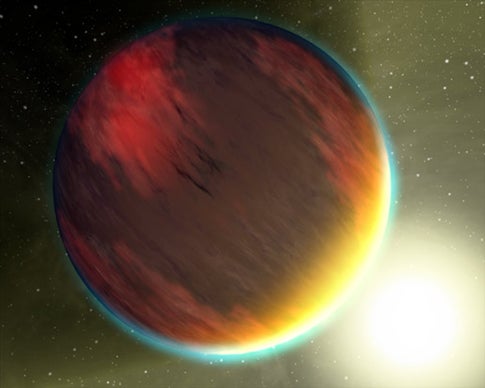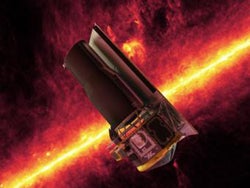University of Central Florida Physics Professor Joseph Harrington and his team have measured the hottest planet ever at 3700 degrees Fahrenheit.
“HD 149026b is simply the most exotic, bizarre planet,” Harrington said. “It’s pretty small, really dense, and now we find that it’s extremely hot.”
Using Spitzer, NASA’s infrared space telescope, Harrington and his team observed the tiny planet disappear behind its star and then reappear. Although the planet cannot be seen separately from the star, the dimming of the light that reached Spitzer told the scientists how much light the hot planet emits. From this, they deduced the temperature on the side of the planet facing its star. The team’s findings were published online in Nature today.
There are more than 230 extrasolar planets, but this is only the fourth of these to have its temperature measured directly. It is simple to explain the temperatures of the other three planets. However, for HD 149026b to reach 3700 degrees, it must absorb essentially all the starlight that reaches it. This means the surface must be blacker than charcoal, which is unprecedented for planets. The planet would also have to re-radiate all that energy in the infrared.
“The high heat would make the planet glow slightly, so it would look like an ember in space, absorbing all incoming light but glowing a dull red,” said Harrington.
Drake Deming, of NASA’s Goddard Space Flight Center in Greenbelt, MD, and a co-author of the Nature paper, thinks theorists are going to be scratching their heads over this one. “This planet is off the temperature scale that we expect for planets, so we don’t really understand what’s going on,” Deming said. “There may be more big surprises in the future.”
Harrington’s team on this project also included Statia Luszcz from the Center for Radiophysics and Space Research at Cornell University, who is now a graduate student at the University of California, Berkeley. Sara Seager, a theorist in the Departments of Earth, Atmospheric, and Planetary Sciences and of Physics at the Massachusetts Institute of Technology, and Jeremy Richardson, an observer from the Exoplanet and Stellar Astrophysics Laboratory at NASA Goddard, round out the team.











